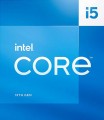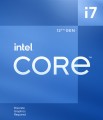Series
The series to which the processor belongs.
A series usually combines chips that are similar in general level, characteristics, features and purpose — for example, low-cost processors with low power consumption, mid-range models with advanced graphics capabilities, etc. It is most convenient to start choosing a processor by determining the series that is optimal for you fit; however, it is worth considering that chips of the same series may belong to different generations.
Here are the most popular series of processors from Intel:
—
Celeron. Low-cost-level processors, the most simple and inexpensive consumer-level desktop chips from Intel, with the appropriate characteristics. They can combine a CPU with an integrated graphics module.
—
Pentium. A series of low-cost desktop processors from Intel, somewhat more advanced than the Celeron.
—
Core i3. A series of entry-level and mid-level processors, the most budgetary series in the Core ix family. They are based on a dual-core architecture, have a third-level cache and an integrated graphics processor.
—
Core i5. A series of mid-range processors, both in general and in the Core ix family. The architecture is dual or quad-core, have a third-level cache, many models are also equipped with an integrated graphics chip.
—
...Core i7. A series of performant processors; before the introduction of the i9 line in May 2017, they were the most advanced in the Core ix family. They have at least 4 cores(up to 8 in top solutions), a volumetric level 3 cache and integrated graphics.
— Core i9. High performance desktop processors introduced in 2017; the most advanced Core ix series and the most powerful line of desktop CPUs at the time of release. They have from 10 cores (from 6 in mobile versions).
— Xeon. A series of high-performance processors designed primarily for servers. Well suited for multiprocessor systems. The number of cores is 2, 4 or 6, many models have a third-level cache.
AMD's most popular CPU series these days include Ryzen 3, Ryzen 5, Ryzen 7, Ryzen 9, Ryzen Threadripper, EPYC.
— A series. A series of so-called hybrid processors from AMD, also called APU — Accelerated Processing Unit. They are mainly high-end solutions with advanced integrated graphics, the capabilities of which in some models are comparable to discrete graphics cards. In particular, for the latest A-Series processors, the possibility of full-fledged work with many popular online games at maximum settings is claimed.
— EPIC. A series of professional processors from AMD, designed primarily for servers; are positioned, in particular, as solutions optimized for use in cloud services. Built on the Zen microarchitecture, just like desktop Ryzen (see below).
— FX. A family of high-end performance processors from AMD, the world's first series to introduce an octa-core processor for PCs. However, there are relatively modest quad-core ones. Another feature is liquid cooling, which is included in the standard delivery of some models: classic air cooling is not enough given the high power and the corresponding TDP (see below).
— AMD Fusion. The entire Fusion processor family was originally created as integrated graphics devices, combining a central processing unit and a graphics card in one chip; such chips are called APU — Accelerated Processing Unit, and their graphics performance is often comparable to inexpensive discrete graphics cards. Modern Fusion processors are marked with the letter A and an even number — from A4 to A12; the higher the number, the more advanced the series is.
— Athlon. The Athlon marking itself is used in many processor families from AMD, including those that are completely obsolete. Nowadays, this name can mean both Athlon X4 and "regular" Athlons with the code name specified — usually Bristol Ridge or Raven Ridge. All these CPUs are designed mainly for consumer-level systems. At the same time, X4 chips were released in 2015 and are positioned as relatively inexpensive and at the same time performant solutions for the FM + socket. Athlon Bristol Ridge processors appeared in 2016 and became the latest series of "athlons" based on the Excavator microarchitecture (28-nm process technology). The next generation, Raven Ridge, used the Zen microarchitecture, which introduced a number of key improvements — in particular, a 14nm process technology and multi-threading support. Both of these series belong to the middle level.
— Ryzen 3. The third series of processors from AMD built on the Zen microarchitecture (after Ryzen 7 and Ryzen 5). The first chips of this series were released in the summer of 2017 and became the most low-cost solutions among all Ryzen. They are produced using the same technologies as the older series, however, half of the computing cores are deactivated in Ryzen 3. Nevertheless, this line includes quite performant devices, including those designed for gaming configurations and workstations.
— Ryzen 5. A series of processors from AMD, built on the Zen microarchitecture. The second series on this architecture, released in April 2017 as a more affordable alternative to Ryzen 7 chips. Ryzen 5 chips have slightly more modest performance characteristics (in particular, a lower clock speed and, in some models, L3 cache size). Otherwise, they are completely similar to the "sevens" and are also positioned as high-performance chips for gaming and workstations. See "Ryzen 7" below for details.
— Ryzen 7. AMD's first series of processors based on the Zen microarchitecture. It was introduced in March 2017. In general, Ryzen chips (all series) are promoted as high-end solutions for gamers, developers, graphic designers and video editors. One of the main differences between Zen and previous microarchitectures was the use of simultaneous multithreading (see "SMT (multithreading)"), due to which the number of operations per clock was significantly increased at the same clock frequency. In addition, each core received its own floating point unit, the speed of the first level cache has increased, and the L3 cache in Ryzen 7 is nominally 16 MB.
— Ryzen 9. A series introduced in 2019 with the release of third-generation Matisse chips based on the Zen microarchitecture. Like all Ryzen, it is intended primarily for high-performance gaming and workstations, gaming systems and PC enthusiasts; at the same time, this series became the top among all “ryzens”, displacing Ryzen 7 from this position. For example, the first Ryzen 9 models had 12 cores and 24 threads, in later ones this number was increased to 16/32, respectively.
— Ryzen Threadripper. AMD's High-Performance Gaming and Creativity Series: Threadripper chips are specifically designed for high-performance gaming systems and workstations, according to manufacturers. They have 8 cores and support multithreading.
In addition to the series, modern processors are also divided into generations, according to the release time. At the same time, one generation includes several series, and one series can be produced within several generations. See "Code Name" for more on this.Code name
This parameter characterizes, firstly, the technical process (see above), and secondly, some features of the internal structure of processors. A new (or at least updated) codename is introduced to the market with each new CPU generation; chips of the same architecture are "coevals", but may belong to different series (see above). At the same time, one generation can include both one and several code names.
Here are the most common Intel codenames today:
Cascade Lake-X (10th gen),
Comet Lake (10th gen),
Comet Lake Refresh (10th generation),
Rocket Lake (11th generation),
Alder Lake (12th generation),
Raptor Lake (13th generation),
Raptor Lake Refresh (14th generation).
For AMD, this list includes
Zen+ Picasso,
Zen2 Matisse,
Zen2 Renoir,
Zen3 Vermeer,
Zen3 Cezanne,
Zen4 Raphael,
Zen4 Phoenix and
Zen5 Granite Ridge.
Cores
The number of physical cores provided in the processor design. The core is the part of the processor that is responsible for executing the instruction stream. The presence of multiple cores allows the CPU to work simultaneously with several tasks, which has a positive effect on performance. Initially, each physical core was intended to operate with one thread of commands, and the number of threads corresponded to the number of cores. However, today there are many processors that support multi-threading technologies and are capable of executing two streams of commands on each core at once. For more information about this, see “Amount of threads”.
Desktop processors
have 2 cores (2 threads), as a rule, typical for budget models.
2 cores (4 threads) and
4 cores are typical for inexpensive mid-class solutions.
4 cores (8 threads),
6 cores,
6 cores (12 threads),
8 cores - a strong mid-range.
8 cores (16 threads),
10 cores,
12 cores,
16 cores and
more are characteristic features of advanced models, including processors for servers and workstations.
At the same ti
...me, it is worth considering that the actual capabilities of the CPU are determined not only by this parameter, but also by other characteristics - primarily by series and generation / architecture (see the corresponding paragraphs). It is not uncommon for situations where a more advanced and/or new dual-core processor turns out to be more powerful than a quad-core chip from a more modest series or an earlier architecture. So it makes sense to compare CPUs by the number of cores within the same series and generation.Performance
Number of high-performance Performance Cores (or P-Cores) in Intel processors since 12th generation (Alder Lake). P-cores have support for Hyper-Threading and take on the execution of resource-intensive tasks of the first plan. Those. they are directly responsible for the performance level of the processor as a whole.
Efficient
The number of energy-efficient Efficient Cores (or E-Cores) in Intel processors since the Alder Lake generation. They are relatively small and can be added in clusters of four — on a silicon chip, such groups occupy the same area as one high-performance core. E-cores work out basic background loads.
Performance-core Base
The base clock speed of high-performance P-cores for Intel processors on a hybrid architecture.
Efficient-core Base
The base clock rate of the energy-efficient E-cores for Intel APUs starting from the 12th generation (Alder Lake).
TurboBoost / TurboCore
The maximum processor clock speed that can be reached when running in Turbo Boost or Turbo Core overclocking mode.
The name "Turbo Boost" is used for the overclocking technology used by Intel, "Turbo Core" for the solution from AMD. The principle of operation in both cases is the same: if some cores are not used or work under a load below the maximum, the processor can transfer part of the load from the loaded cores to them, thus increasing computing power and performance. Operation in this mode is characterized by an increase in the clock frequency, and it is indicated in this case.
Note that we are talking about the maximum possible clock frequency — modern CPUs are able to regulate the operating mode depending on the situation, and with a relatively low load, the actual frequency may be lower than the maximum possible. See "Clock frequency" for the general meaning of this parameter.
Efficient-core Max
Peak clock rate for the Efficient cores from Intel processors based on hybrid architecture.

